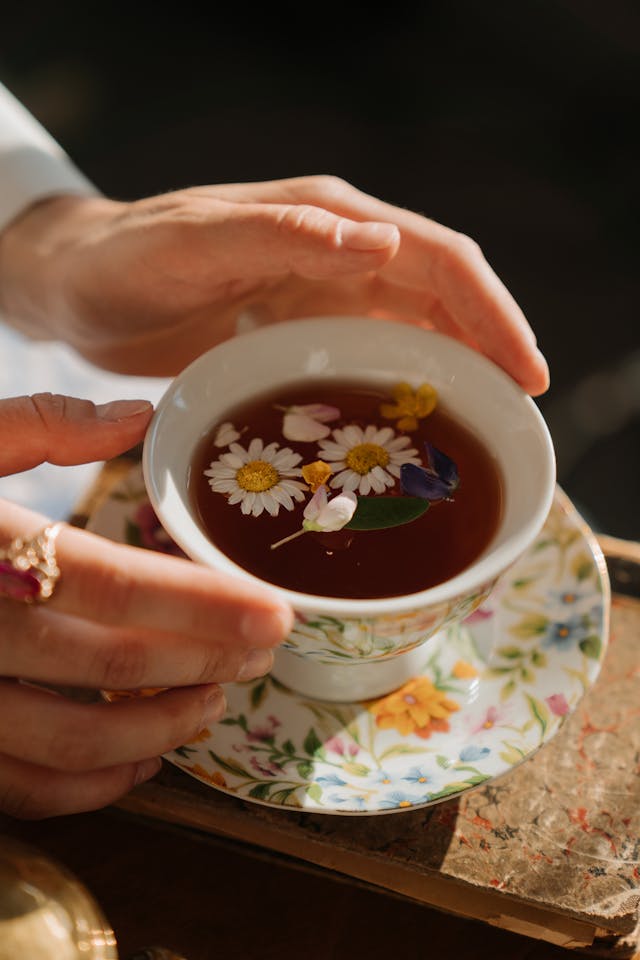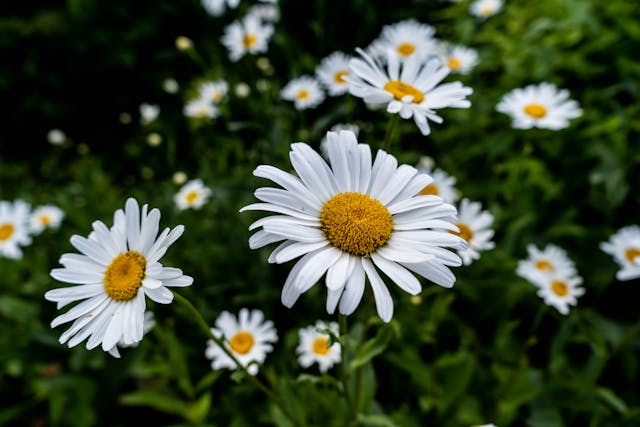Chamomile is a delightful herb that has been cherished for centuries for its many health benefits and its gentle, soothing presence in both gardens and kitchens. Known scientifically as Matricaria chamomilla (German chamomile) or Chamaemelum nobile (Roman chamomile), this unassuming flower holds a powerful place in both history and modern wellness practices. With its daisy-like blooms and sweet, apple-like aroma, chamomile is a versatile herb that is easy to grow and use in a variety of ways.
Health Benefits
Chamomile is perhaps best known for its calming effects on the mind and body. It has been traditionally used as a natural remedy for anxiety and insomnia. Studies suggest that chamomile tea can significantly improve sleep quality, helping those who struggle with restlessness or insomnia to find relief and relaxation. The flavonoids present in chamomile bind to receptors in the brain, inducing a sense of tranquility and aiding in the reduction of stress and anxiety. Additionally, chamomile possesses anti-inflammatory properties that can help alleviate symptoms of conditions such as arthritis and muscle spasms. Its natural antioxidants, including apigenin, play a role in reducing inflammation and boosting the immune system, making it a valuable ally during cold and flu season. Chamomile is also known to aid digestion, providing relief from bloating, gas, and upset stomach, thanks to its ability to relax digestive muscles and improve bile flow.

Ease of Growth
Growing chamomile is an easy endeavor, making it an excellent choice for both novice and experienced gardeners. It thrives in well-draining soil with plenty of sunlight but can tolerate partial shade. Chamomile can be planted in gardens or containers, making it versatile for various garden sizes and settings. German chamomile is an annual that self-seeds readily, while Roman chamomile is a perennial that forms a low-growing carpet of greenery. Both varieties attract beneficial insects, such as bees and butterflies, enhancing the health of your garden ecosystem. Regular watering is necessary, but chamomile is drought-tolerant and can withstand periods of dry conditions, making it a resilient addition to any garden.
Taste and Uses
The taste of chamomile is delicate and slightly sweet, with a hint of apple and a touch of earthiness. This makes it a delightful ingredient in both culinary and medicinal applications. Chamomile tea is the most popular way to enjoy the herb, offering a comforting and soothing experience. Simply steep dried chamomile flowers in hot water for 5 to 10 minutes, and enjoy the fragrant, calming brew. Beyond tea, chamomile can be used in baking and cooking to add a subtle floral note to dishes. Try infusing milk with chamomile for use in custards or desserts, or incorporate the flowers into a marinade for meats. Chamomile can also be added to herbal blends for seasoning or as a garnish for salads and desserts, providing a unique and delicate flavor.

Historical Uses
Historically, chamomile has been used by various cultures for its medicinal properties. The ancient Egyptians revered chamomile for its healing abilities and used it in cosmetics and as an offering to their gods. The Romans utilized chamomile to flavour drinks and incense, as well as for its health benefits. In the Middle Ages, chamomile was a common ingredient in herbal remedies and was used to treat ailments ranging from fever to digestive issues. Chamomile has been a staple in traditional medicine practices across Europe and Asia for centuries, with its popularity only growing over time. Today, it remains a beloved herb in holistic health circles and continues to be studied for its potential therapeutic effects.
Incorporating chamomile into your life can be a simple yet powerful way to enhance your physical and mental well-being. Whether enjoyed as a calming tea before bedtime, used to add a subtle floral note to culinary creations, or grown in your garden for its beauty and resilience, chamomile is an herb that deserves a place in your daily routine. Its historical significance and proven health benefits make chamomile a timeless remedy, and its ease of growth and versatility make it accessible to everyone. So why not plant some chamomile today and let this ancient herb bring tranquillity and wellness into your life?

